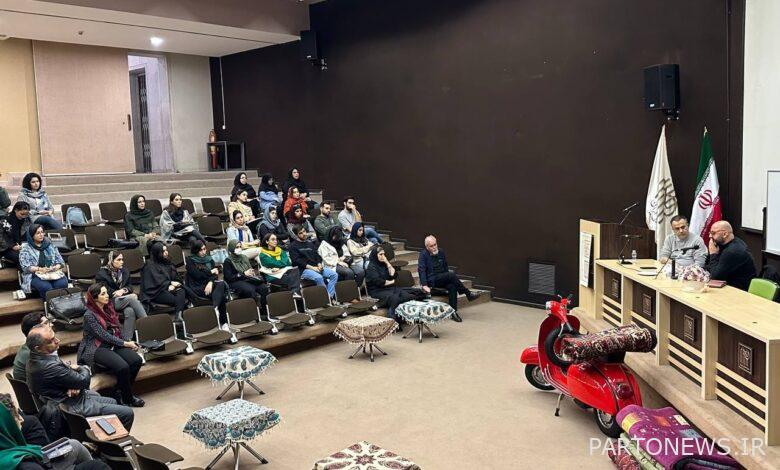Holding a training workshop on the translation of nomadic motifs and weavings into today’s language at the Iran Carpet Museum

According to Aria’s Heritage report, citing the public relations of the Iran Carpet Museum, the first educational workshop was held in the first nomadic carpet festival on November 21, 1402 in the Pazyrik Hall of the Iran Carpet Museum with the presence of veterans, designers, artists and people interested in hand-woven carpets.
In this workshop, Mirmola Soraya, an outstanding artist and designer, discussed the topic of “Translating the motifs and weavings of the nomads into today’s language”. Mirmola Soraya is a graduate of Isfahan Azad University and Tehran University of Cultural Heritage, majoring in carpets and handicrafts, and in her works she examines the historical and social role of carpet weaving and challenges the definition of carpets in terms of the arrangement and form of her works.
In this workshop, he said: Nomadic handwovens as the origin of Iranian carpets have patterns with a history of several thousand years, reflecting the way of life, the surrounding nature and the wishes of the weaver in those days. But later on, urbanization and trade occupied and captivated the imagination of the nomad, so that the simple, geometric and primitive patterns of plants and animals, which were the manifestation of the individual interpretations of the nomadic man from his surroundings, gradually turned into verbose, complex and unrealistic patterns. and that direct approach of the weaver will never appear again.
Soraya added: due to the system approach that is used today in India, Nepal and Pakistan for carpet production and due to the very low wages of the weavers of these countries, the commercial carpet market in the world has been captured by these countries, and also the carpets of Morocco with The tourism approach and the connections that this country has with Europe are sold at exorbitant prices.
This designer stated: The only solution for the permanence of Iranian carpets is to focus on its artistic and cultural approach, which can be achieved if it is combined with meeting the demands of foreign customers and strict quality control, as well as the way it is presented as an exquisite product. Conquer the global markets and restore it to its past glory.
At the end of this workshop, Amirhossein Roshan Zameer, a member of the Technology and Innovation Committee of the Iran Carpet Museum, while thanking Mirmola Soraya and the participants in the workshop, said: Iran Carpet Museum, as the first and most specialized carpet museum, is the most important base for introducing and promoting Iranian handwoven carpets in the world. The key link in the value chain is the carpet. Therefore, with a new approach developed by the management, Iran Carpet Museum decides to hold a cultural festival on the 20th of every month with the theme of introducing carpets from different parts of Iran along with related educational workshops.
He added: In the first nomadic carpet festival, 8 educational workshops will be held on different topics, which are free and open to the public, and the Iranian Carpet Museum is open to participants who attend all 16 hours of the festival’s workshops at the museum. , issues a certificate of presence registered in the field of blockchain.
end of message/

